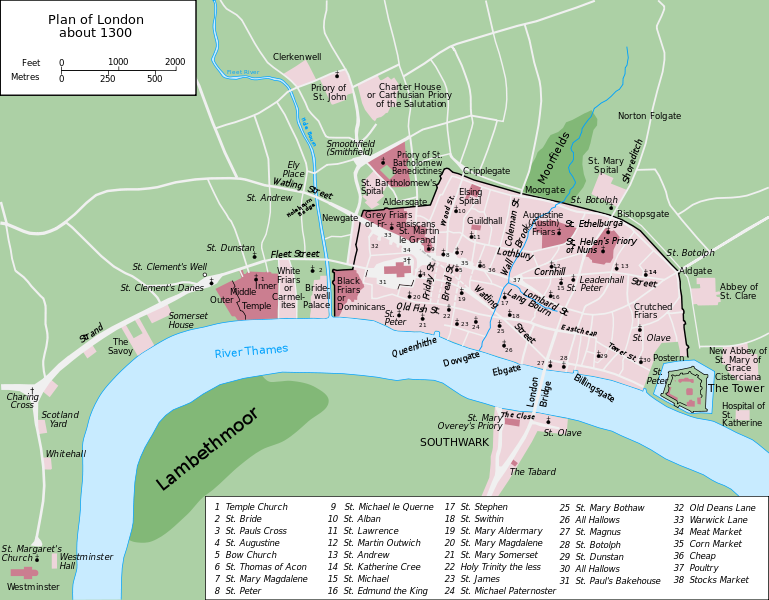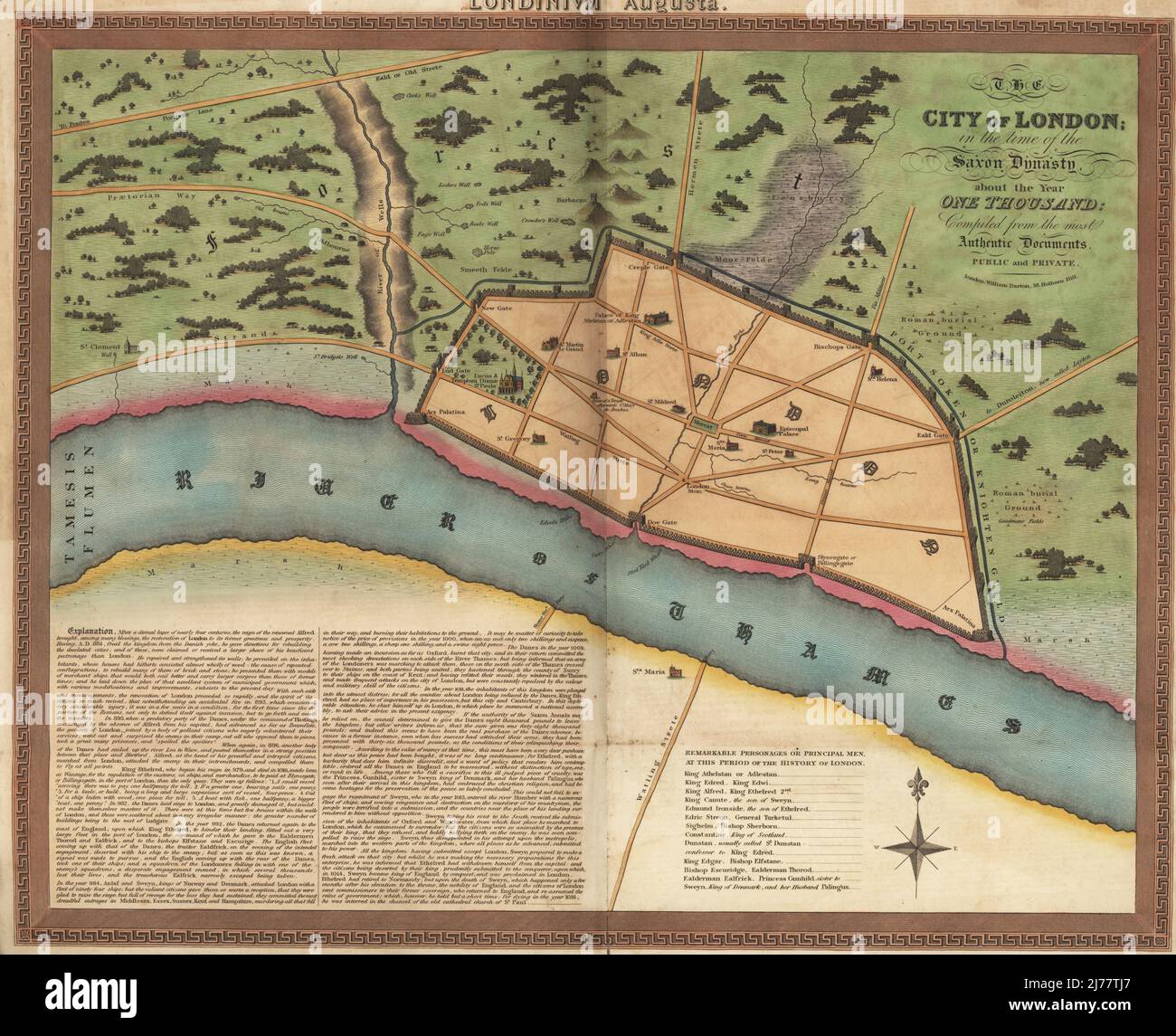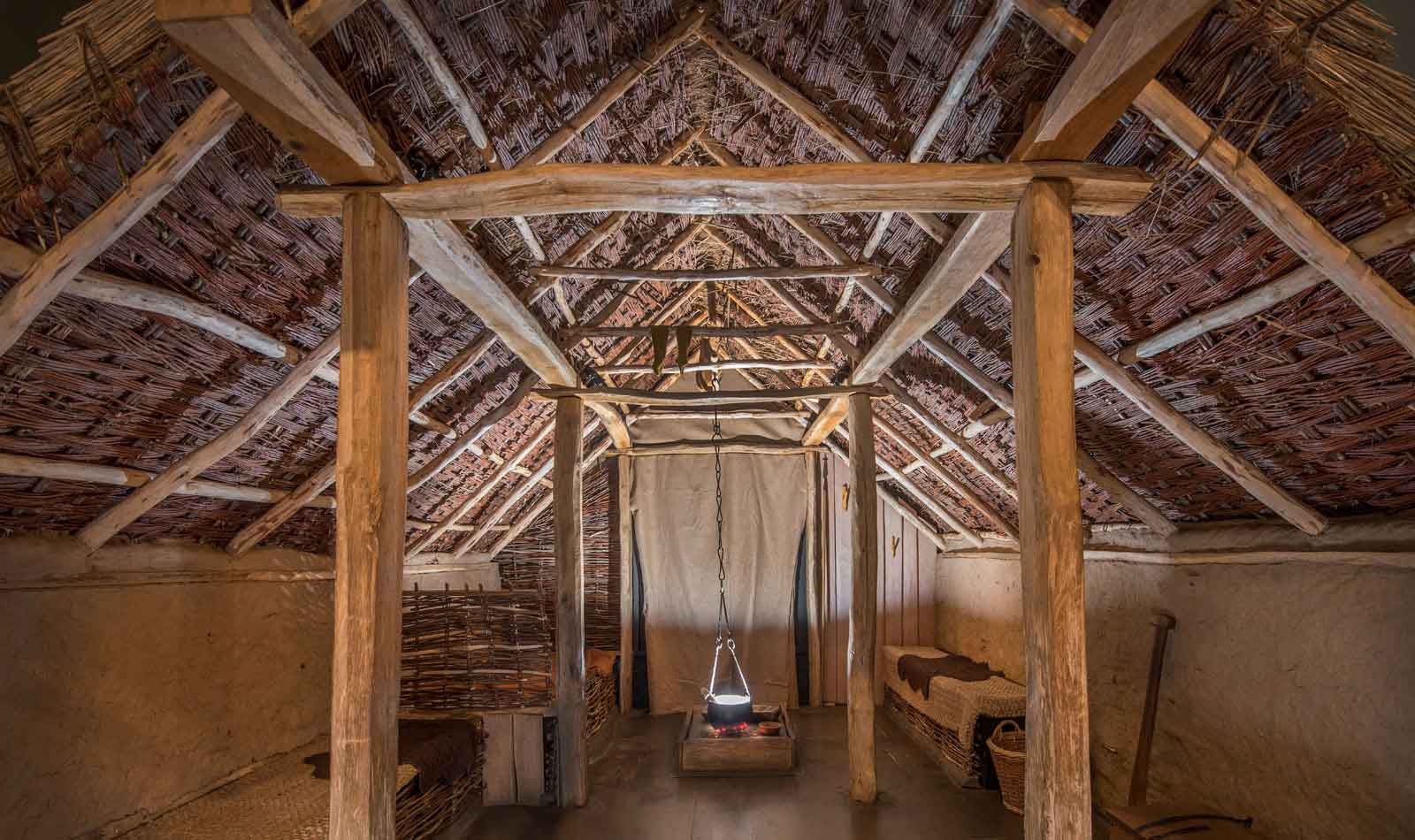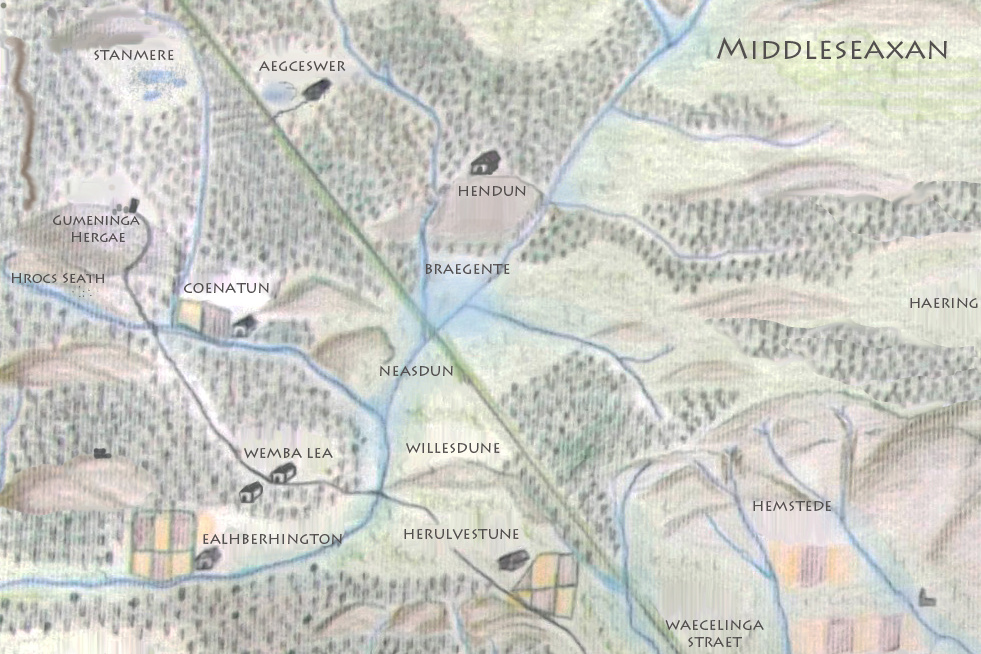
AngloSaxon London Londependence
London History Roman | Anglo-Saxon | Medieval | Tudor | Stuart | Georgian | Victorian | 20th century London English History Also see "English History" and our award-winning "English Culture" section. Attraction search The history of the city of London during the Anglo-Saxon period.

Late AngloSaxon London Part 1 Patricia Bracewell
However, there is little left of Anglo-Saxon London, a period of time that stretched over 600 years between 410 to 1066. Thankfully, the historian Tom Holland has mapped out an epic 24 walk across London through the Middle Ages, citing place-names, street-plans and buildings of Anglo-Saxon significance along the way. His epic Twitter thread is

HandDrawn Maps AngloSaxon London Londonist
United Kingdom - Anglo-Saxon, England, History: Although Germanic foederati, allies of Roman and post-Roman authorities, had settled in England in the 4th century ce, tribal migrations into Britain began about the middle of the 5th century. The first arrivals, according to the 6th-century British writer Gildas, were invited by a British king to defend his kingdom against the Picts and Scots.

Map of Anglo Saxon Kingdoms Layers of Learning Anglo saxon kingdoms, Anglo saxon history
The Anglo-Saxon ship burial at Sutton Hoo Home Collection Death and memory The Anglo-Saxon ship burial at Sutton Hoo A king's grave? The missing body Piecing together evidence Inside the burial chamber A light on the 'Dark Ages' Photos of the excavations Room 41 Explore the impressive Anglo-Saxon artefacts in our Sutton Hoo and Europe gallery.

Olav Haraldsson and the London Bridge Puente de londres, Arquitectura antigua, Vikingos
The History of London Saxon and the Viking London (AD 550 - 1066) The Anglo-Saxons AD 550 In the 6th century, Anglo-Saxons settled just west and and upriver of the Roman city Londinium. They established their own city of Lundenwic* (where Covent Garden, Charing Cross and the Strand are today ** ).

HandDrawn Maps AngloSaxon London Londonist
The Anglo-Saxon period in Britain spans approximately the six centuries from 410-1066AD. The period used to be known as the Dark Ages, mainly because written sources for the early years of Saxon invasion are scarce. However, most historians now prefer the terms 'early middle ages' or 'early medieval period'.

HandDrawn Maps AngloSaxon London Londonist
Saxon collection Important assemblages include some of the material from the cemeteries at Mitcham, Hanwell and Ewell and the small but historically important group from the Savoy Palace site, which was one of the first indications of possible Saxon settlement to the west of the Roman city.

Journey into AngloSaxon England
The topography of Anglo-Saxon London. Part of: Anglo-Saxon archaeology. Published online by Cambridge University Press: 15 May 2015. Tim Tatton-Brown. Article. Metrics. Save PDF.

HandDrawn Maps AngloSaxon London Londonist
published on 18 May 2015 Download Full Size Image This is a map of Anglo- Saxon London between circa 500 CE and 1066 CE. The main purpose of this map is to highlight those place names which can still be recognized in modern London. As this map spans over 500 years, some of these places may not have existed for the entire timespan.

HandDrawn Maps AngloSaxon London Londonist
LONDON -- Archaeologists. a Bronze Age barrow and a Romano-British farmstead. The most striking discovery, however, is the remains of an Anglo-Saxon cemetery," according to Wessex Archaeology.

Remarkable Images of London Show its Evolution Over Nearly 2,000 Years
Anglo-Saxon religion. Early Anglo-Saxon religion was a pagan belief system based on Germanic mythology. Remnants of these gods remain in the English names for the days of the week: Tuesday - Tiw (god of war), Wednesday - Woden (god of the dead), Thursday - Thor (god of thunder) and Friday - Fréo (goddess of love).

Anglo saxon town map hires stock photography and images Alamy
Anglo-Saxon England or Early Medieval England, existing from the 5th to the 11th centuries from soon after the end of Roman Britain until the Norman Conquest in 1066, consisted of various Anglo-Saxon kingdoms until 927, when it was united as the Kingdom of England by King Æthelstan (r. 927-939).

HandDrawn Maps AngloSaxon London Londonist
In 1939, Edith Pretty, a landowner at Sutton Hoo, Suffolk, asked archaeologist Basil Brown to investigate the largest of several Anglo-Saxon burial mounds on her property. Inside, he made one of the most spectacular archaeological discoveries of all time. Beneath the mound was the imprint of a 27m-long (86ft) ship.

Exploring everyday life in early AngloSaxon London Chronicle of London
Saxon London Saxon London Pages 447-452 Old and New London: Volume 1. Originally published by Cassell, Petter & Galpin, London, 1878. This free content was digitised by double rekeying. Public Domain. Citation: Walter Thornbury, 'Saxon London', in Old and New London: Volume 1 (London, 1878), pp. 447-452.

London AngloSaxon Archaeology
Anglo-Saxon, term used historically to describe any member of the Germanic peoples who, from the 5th century ce to the time of the Norman Conquest (1066), inhabited and ruled territories that are today part of England and Wales.

AngloSaxon London Mapping London
Map last updated February 2019. Click or tap for larger image Like this? Get a print here. In 2011, we put together a map showing the London area in Anglo Saxon times (roughly speaking,.